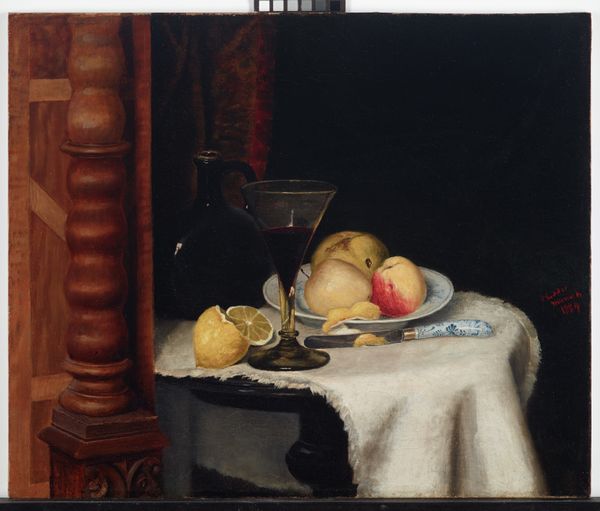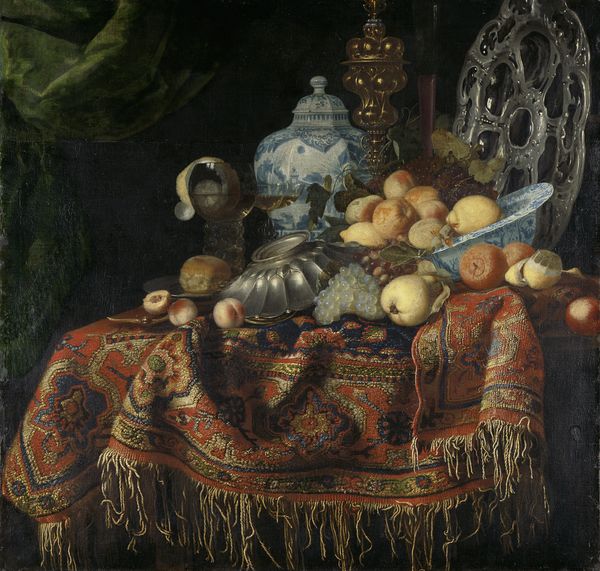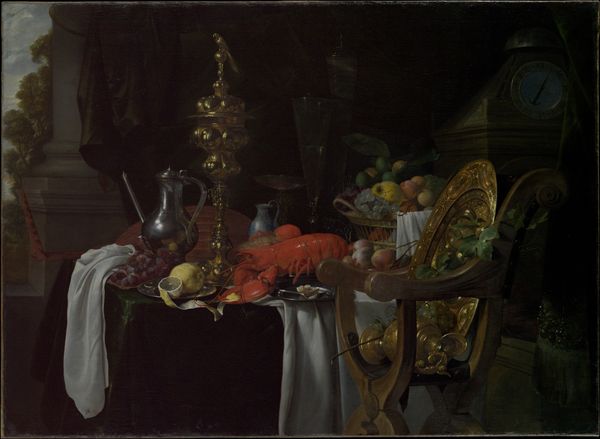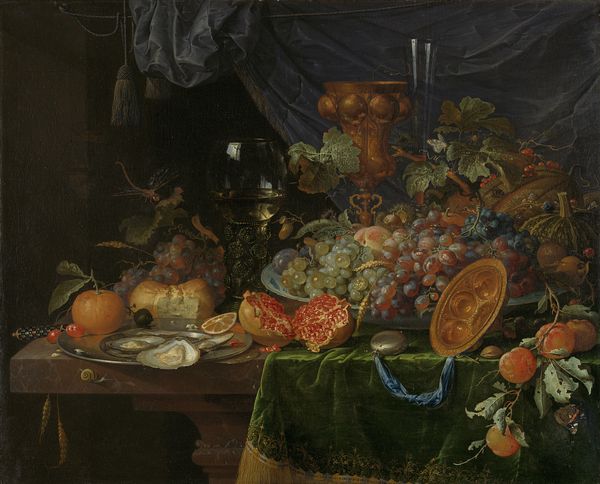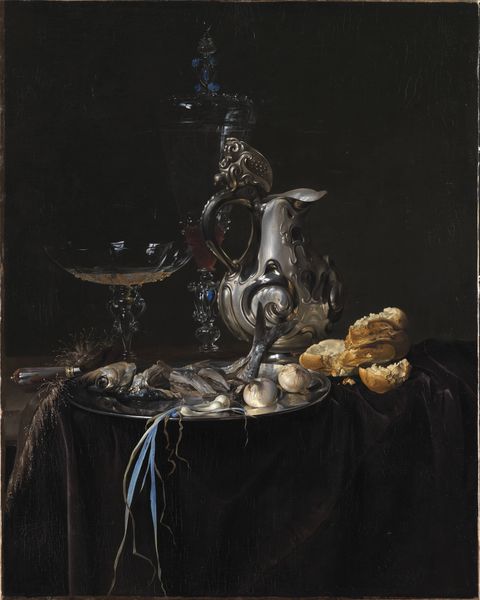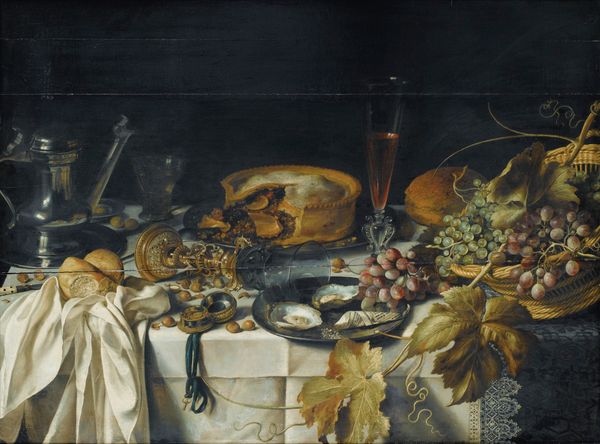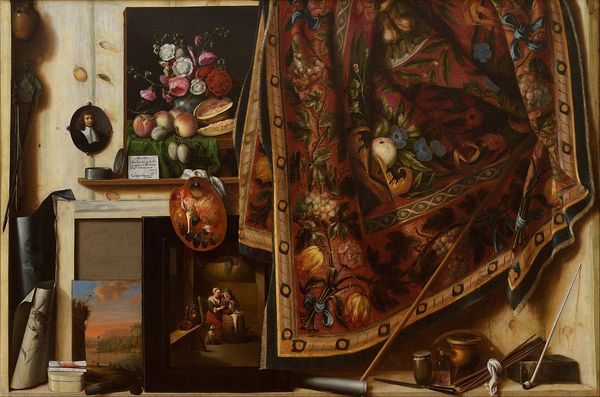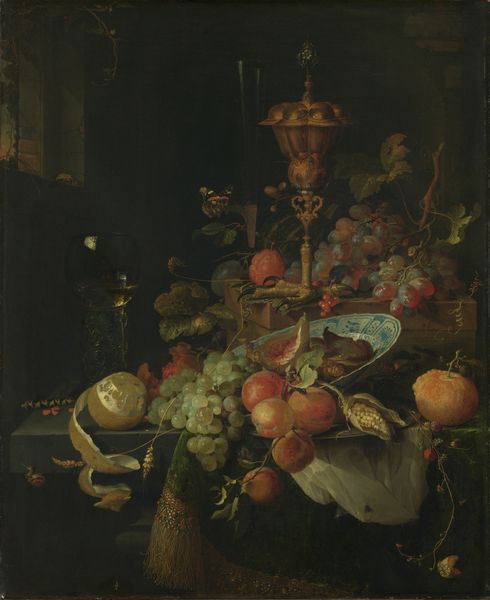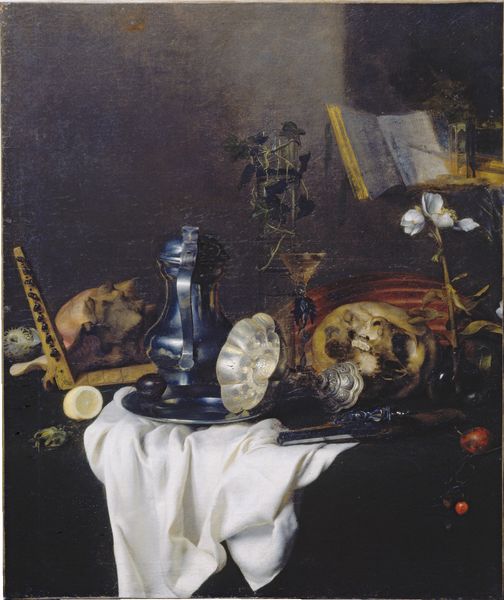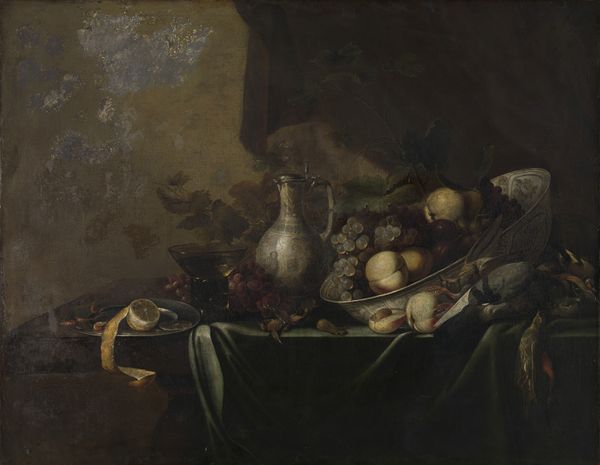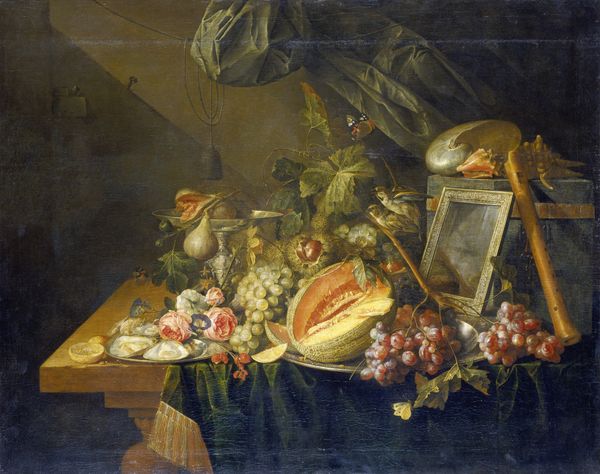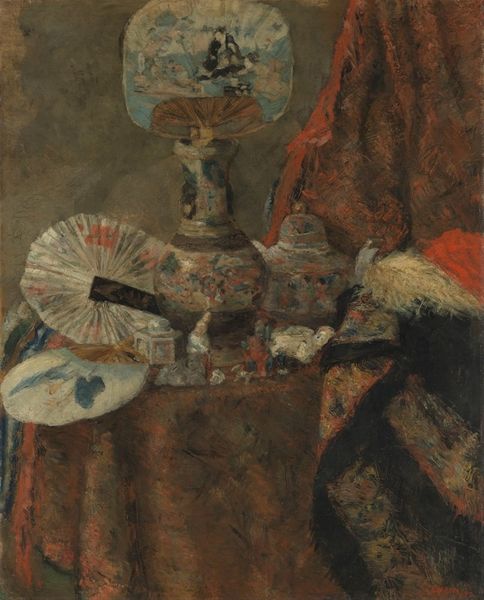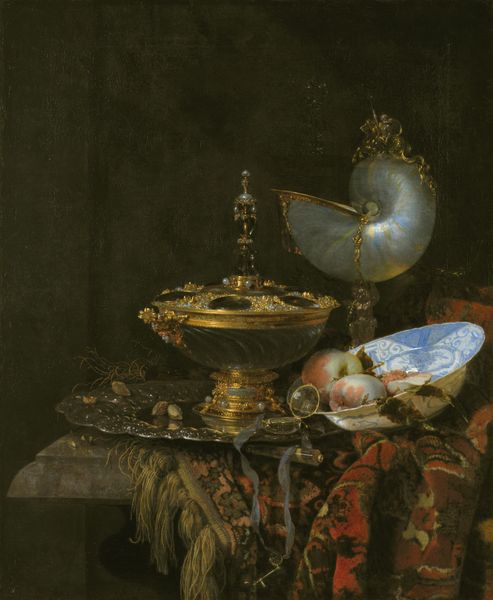
Trompe l'Oeil with Breakfast Piece and Goblets 1672
0:00
0:00
oil-paint, canvas
#
baroque
#
dutch-golden-age
#
oil-paint
#
oil painting
#
canvas
#
trompe-l'oeil
Dimensions: 132 cm (height) x 183 cm (width) (Netto), 135.6 cm (height) x 186.9 cm (width) x 5.5 cm (depth) (Brutto)
Editor: Cornelius Norbertus Gijsbrechts’s “Trompe l’Oeil with Breakfast Piece and Goblets,” painted in 1672 using oil on canvas, is quite a feast for the eyes. It really challenges my perception with how life-like everything appears. What's most striking is how convincingly he renders the textures – the glossy sheen on the goblets versus the rougher fabric. How would you interpret this kind of visual trickery? Curator: Well, consider the socio-political context of the Dutch Golden Age. This kind of hyperrealism wasn't just about artistic skill; it was about power and status. Displaying such opulence in what's essentially an illusion speaks volumes about the Dutch Republic's booming mercantile economy and the desire of its citizens to showcase their wealth. This *trompe l'oeil* tradition gained popularity due to what? It's the art of deception, but why the deception? Editor: So it’s less about deceiving and more about showcasing? Maybe about showing the level of skill, a sort of one-upmanship, if you will, on how well they could replicate reality through painting. Curator: Precisely. And don't forget the role of museums and galleries, even in their nascent forms at the time. These works weren't always intended for private homes. Some were commissioned for or ended up in collections meant to be publicly accessible, thereby bolstering the nation's cultural image. Editor: I see! The painting then serves a dual purpose - personal and national aggrandizement. It’s like saying, “Look at what we have, and look at how well we can represent it!" Thanks. It gave me a different perspective to understand that it is a cultural and historical show off piece. Curator: Indeed! These artists and patrons knew the power of imagery in shaping public perception. It reflects a fascinating intersection of art, wealth, and national identity. We often think of this as purely an artistic endeavor, however, its creation and purpose are tightly coupled to socio-economic history.
Comments
No comments
Be the first to comment and join the conversation on the ultimate creative platform.
